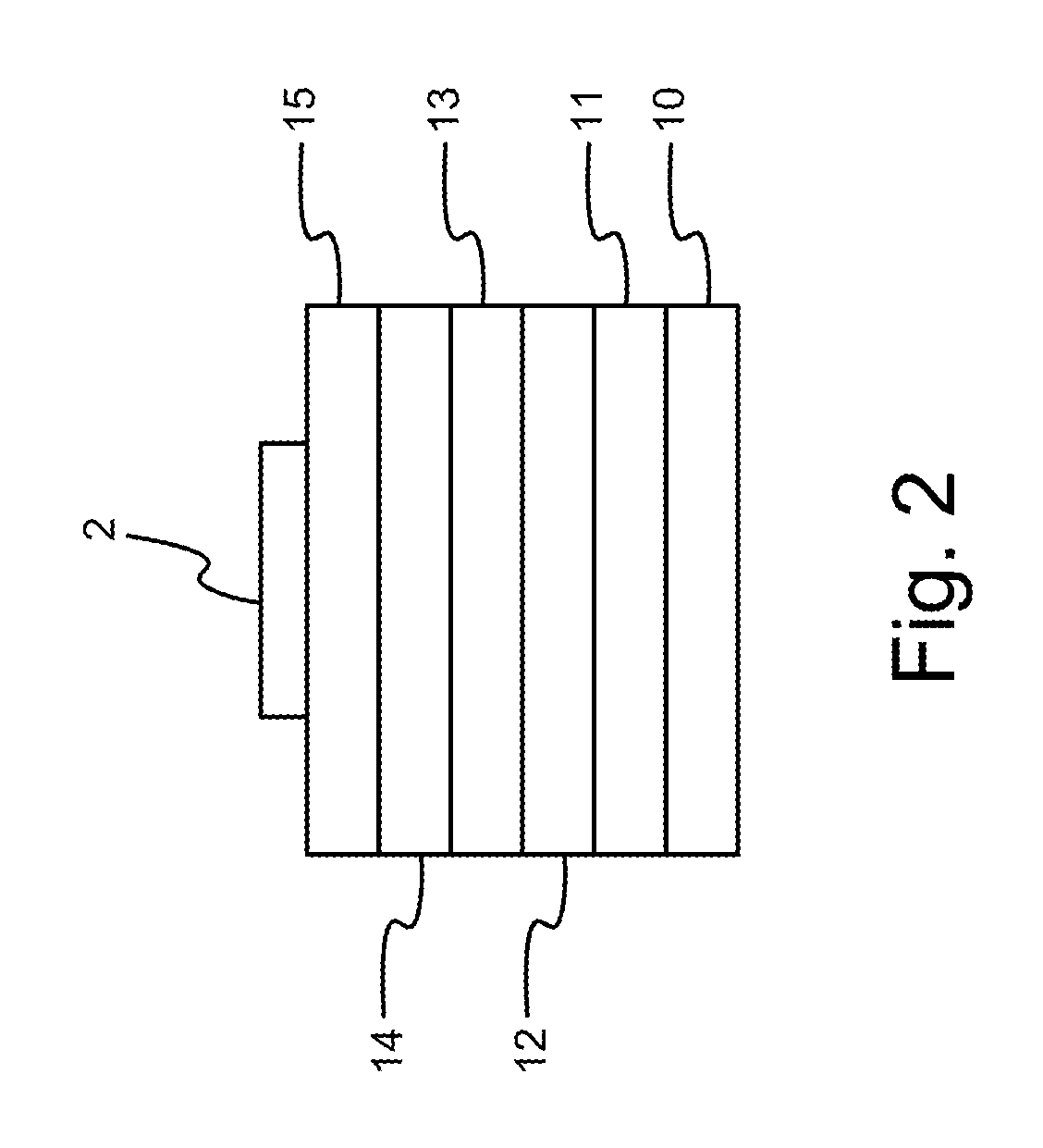Solar Cell Assembly with an Improved Photocurrent Collection Efficiency
a solar cell and photocurrent collection technology, applied in the field of solar cell assembly, can solve the problems of reducing affecting the stability of the solar cell against the temperature, and achieve the effect of improving the photocurrent collection efficiency
- Summary
- Abstract
- Description
- Claims
- Application Information
AI Technical Summary
Benefits of technology
Problems solved by technology
Method used
Image
Examples
Embodiment Construction
[0038]Referring to FIG. 1, there is shown a solar cell assembly with excellent photocurrent collection efficiency according to the first embodiment of the present invention. The solar cell assembly includes a solar cell 1 and a surface barrier layer 2.
[0039]The solar cell 1 includes at least one substrate 10, a buffer layer 11 provided on the substrate 10, a back surface field layer 12 provided on the buffer layer 11, a base layer 13 provided on the back surface field layer 12, an emitter layer 14 provided on the base layer 13, a window layer 15 provided on the emitter layer 14, and a contact layer 16 provided on the window layer 15. The solar cell 1 is a single-junction solar cell.
[0040]The surface barrier layer 2 is provided on the window layer 15. The surface barrier layer 2 is made of phosphide or arsenide.
[0041]The production of the solar cell assembly will be described referring to FIGS. 2 and 3. At first, the surface barrier layer 2 is provided on the window layer 15 in a lit...
PUM
 Login to View More
Login to View More Abstract
Description
Claims
Application Information
 Login to View More
Login to View More - R&D
- Intellectual Property
- Life Sciences
- Materials
- Tech Scout
- Unparalleled Data Quality
- Higher Quality Content
- 60% Fewer Hallucinations
Browse by: Latest US Patents, China's latest patents, Technical Efficacy Thesaurus, Application Domain, Technology Topic, Popular Technical Reports.
© 2025 PatSnap. All rights reserved.Legal|Privacy policy|Modern Slavery Act Transparency Statement|Sitemap|About US| Contact US: help@patsnap.com



